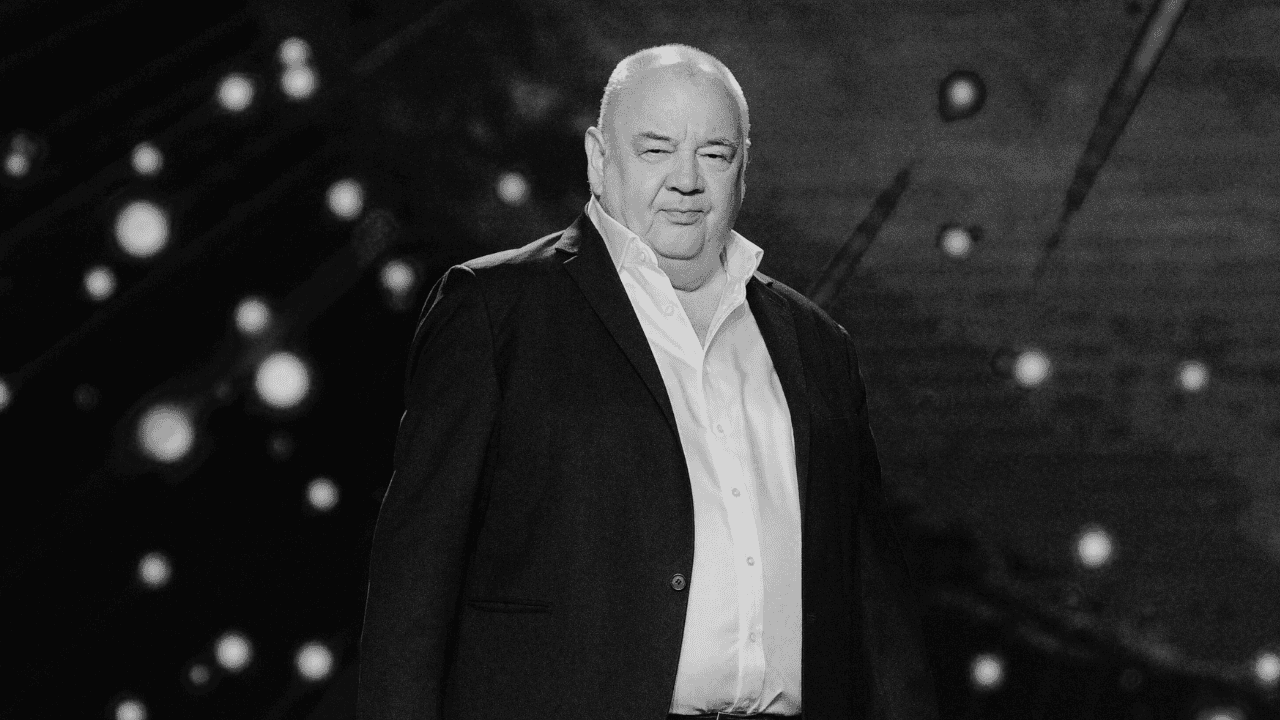
Эверетт- Долгожданная программа Boeing 777X близится к сертификации, а четвертый испытательный самолет уже находится в воздухе. Компания намерена доставить свой первый Boeing 777-9 в Lufthansa (LH) к 2026 году из аэропорта Франкфурта (FRA).
Тем не менее, Lufthansa и другие будущие операторы не увидят ни одной конструктивной особенности, предложенной изначально. «Engine Chevrons». Будучи частью концепции 777X, serrated-edge nacelle design Он был снят в ходе разработки и не будет входить в состав конечного серийного самолета.
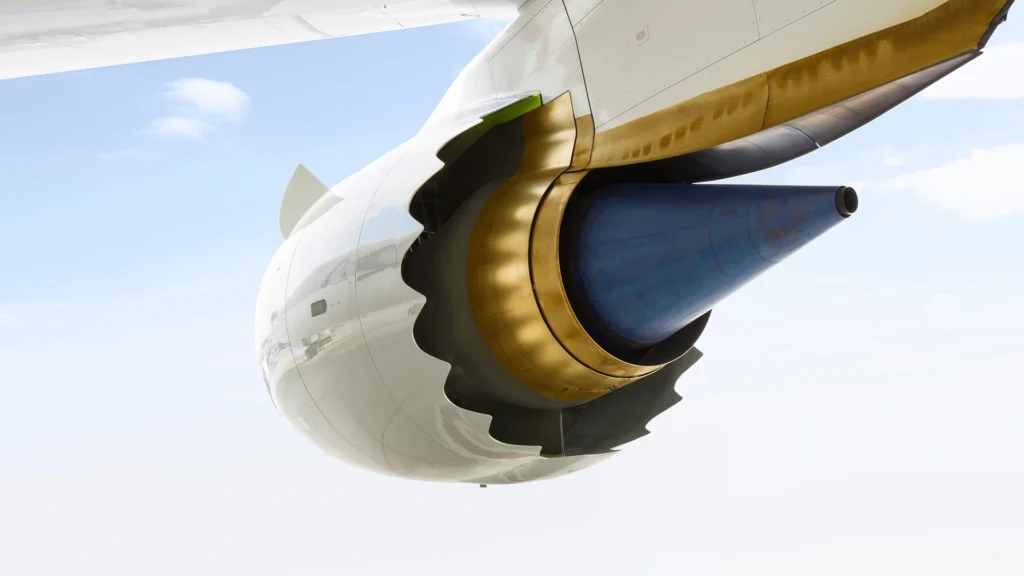 Источник: GE Aerospace
Источник: GE AerospaceBoeing 777X Сброшенный двигатель Chevrons
Двигатель шевроновЭти зубчатые «зубы» в задней части гондол реактивного двигателя были первоначально запланированы для Boeing 777X, так же, как они были реализованы на Boeing 787 и Boeing 737 MAX.
Концепция была направлена на снижение шума двигателя путем сглаживания взаимодействия между горячим выхлопом и более холодным воздухом обхода.
Однако, несмотря на то, что Boeing был представлен в ранних версиях, он в конечном итоге отказался от шевронов 777X.
Согласно Simple Flying, изменения были вызваны новыми разработками. Вместо использования шевронов Boeing и General Electric применили новое низконатяжное сопло с низким уровнем шума на двигателях GE9X.
Терри Бизхолд, Главный инженер проекта 777X, подтвердил этот сдвиг, заявив, что редизайн сопла достигает аналогичных акустических характеристик, предлагая лучшую аэродинамику и меньший вес.
Кроме того, достижения в области материалов, особенно керамических матричных композитов, позволили использовать методы снижения внутреннего шума.
GE и Safran интегрировали сотовую акустическую обработку и стратегически перфорированные композитные скины, чтобы захватывать и уменьшать звук более эффективно, чем шевроны, и без соответствующих штрафов за сопротивление и тягу.
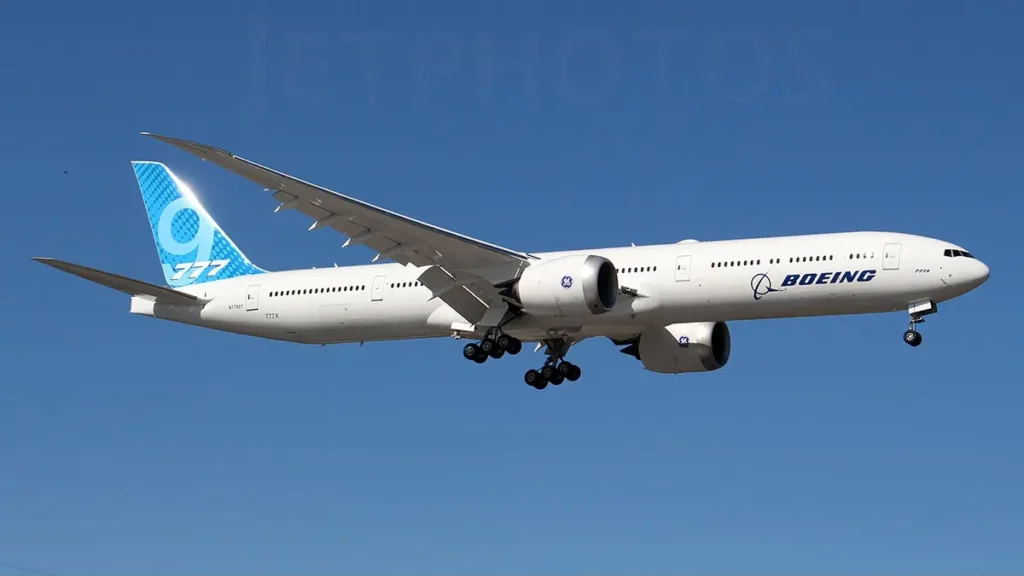 Источник: Huy Do, JetPhotos
Источник: Huy Do, JetPhotosРоль двигателя Chevrons
Двигательные шевроны были разработаны в сотрудничестве между Boeing, NASA и GE. Эти зазубренные конструкции были введены в рамках инициативы Boeing Quiet Technology Demonstrator (QTD).
Впервые замеченные на 787, а затем принятые на 747-8 и 737 MAX, они эффективно уменьшают шум вентилятора до 15 децибел во время взлета и посадки.
Механизм прост: шевроны помогают более плавно смешивать горячие и холодные потоки воздуха, уменьшая турбулентность и, следовательно, шум.
Тем не менее, они вводят небольшой аэродинамический штраф, что приводит к снижению тяги примерно на 0,5%.
Хотя этот компромисс был принят на более ранних самолетах, новые материалы и методы подавления внутреннего шума предлагают лучшие решения для 777X.
Boeing 787 и 747-8 оснащены шевронами на двигателях General Electric GEnx. Rolls-Royce Trent 1000-мощные 787 также используют их.
Boeing 737 MAX с двигателями CFM LEAP-1B включает в себя шевроны гондол в рамках своей стратегии снижения шума.
Однако Airbus, как правило, избегает этой технологии. Например, A350 использует альтернативные акустические процедуры в своих гондолах и использует сверхвысокие шунтирующие двигатели для управления шумом.
Инженеры назвали маржинальные преимущества и потенциальные штрафы за топливо причинами отказа от использования шевронов, а также патентом Boeing на проект.
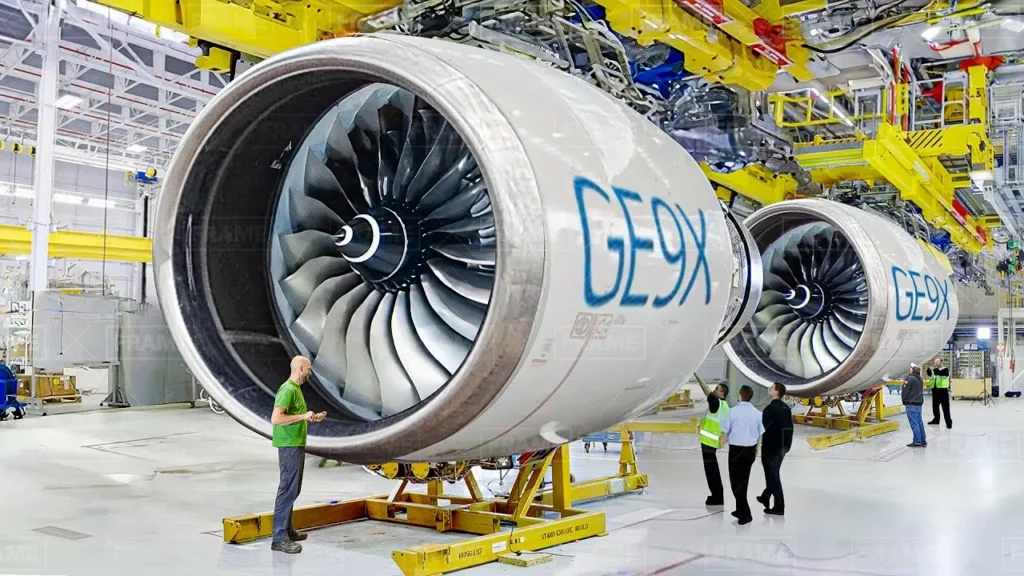 Фото: FRAME | YouTube
Фото: FRAME | YouTubeДвигатель GE9X
Двигатель GE9X, разработанный исключительно для 777X, прошел строгие испытания, в том числе в условиях «тройной красной линии», где он достиг рекордной тяги в 134 300 фунтов.
Несмотря на то, что это превышает типичные эксплуатационные уровни, это сигнализирует об исключительной мощности и надежности самолета.
Разработанный с учетом топливной экономичности и снижения шума, GE9X использует меньше лопастей вентилятора, современные материалы, такие как керамические композиты, и оптимизированную внутреннюю акустику.
Каждый двигатель оценивается в 45 миллионов долларов, что делает его самым дорогим коммерческим двигателем на сегодняшний день.
Эмирейтс заказала 205 777-9, поэтому успех GE9X может изменить стандарты снижения шума в самолетах следующего поколения.
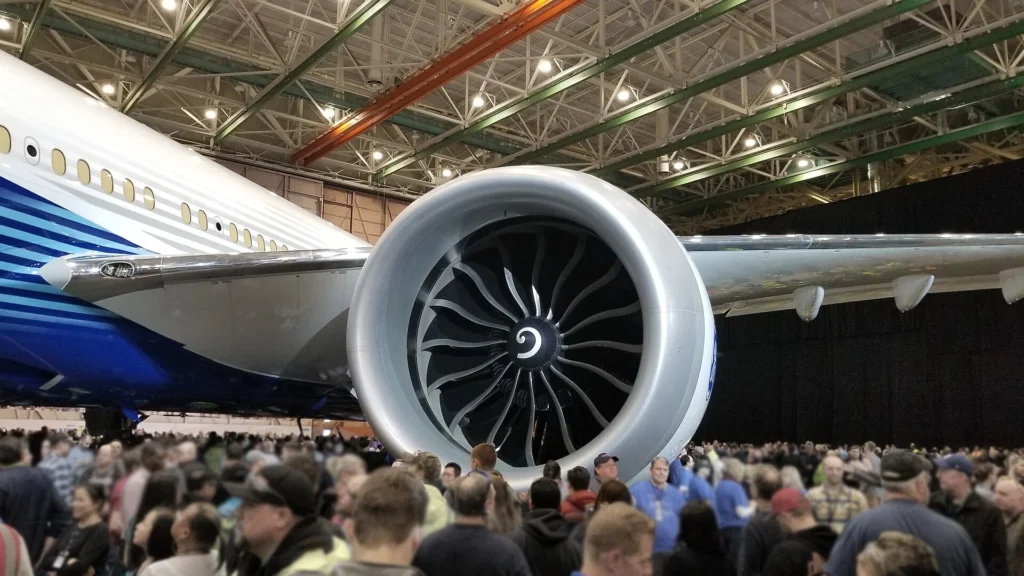 Фото: Дэн Невилл из Сиэтла, штат Вашингтон, США - 20190313_085824, CC BY 2.0, https://commons.wikimedia.org/w/index.php?curid=77445932
Фото: Дэн Невилл из Сиэтла, штат Вашингтон, США - 20190313_085824, CC BY 2.0, https://commons.wikimedia.org/w/index.php?curid=77445932Новый подход к снижению шума
Boeing 777X показал, что инновации не всегда означают большую сложность. Отказавшись от шевронов в пользу передовых внутренних обработок и переработанных насадок, производитель добился равных или лучших акустических характеристик с меньшим количеством аэродинамических штрафов.
Этот сдвиг также отражает более широкие отраслевые тенденции к интегрированным решениям с низким сопротивлением по сравнению с дополнительными структурами.
Эволюция 777X подчеркивает, что дизайн самолета обусловлен как показателями производительности, так и операционной экономикой.
В этом случае то, что когда-то считалось передовой внешней функцией, было заменено более умными внутренними решениями, которые отвечают современным акустическим и эффективным требованиям.
Оставайтесь с нами. Следуйте за нами в социальных сетях для последних обновлений.
Присоединяйтесь к нам в Telegram Group для последних обновлений авиации. Следуйте за нами в Google News
Boeing 777X Сертификация с помощью Crosswind Testing
Пост Boeing Dropped Chevrons от Largest Engine in the World впервые появился на Aviation A2Z.














